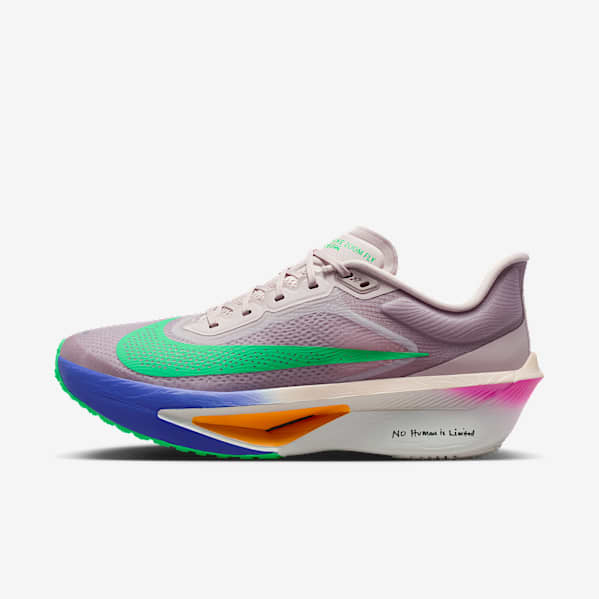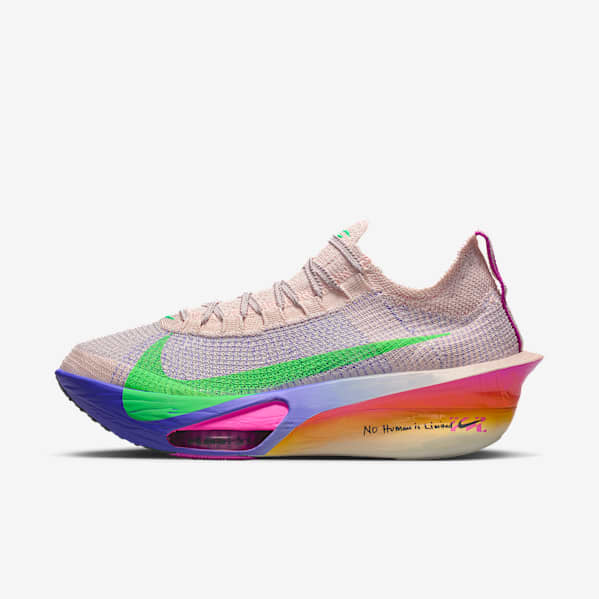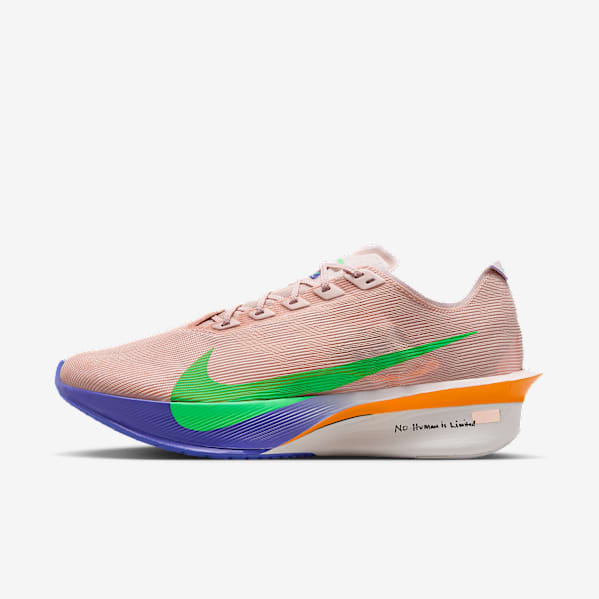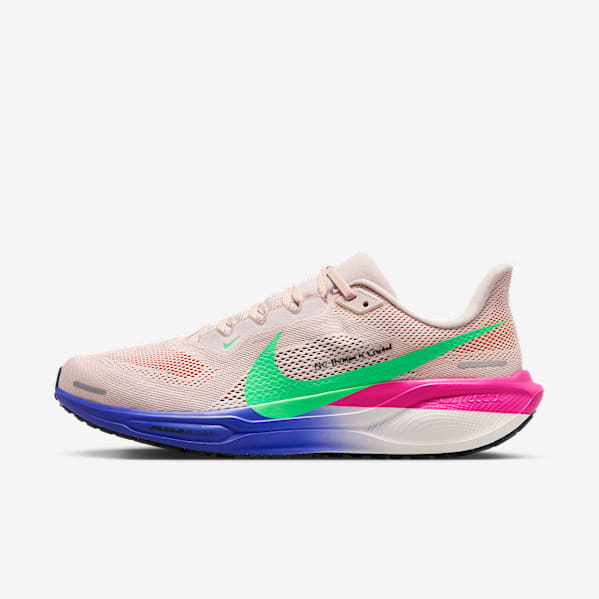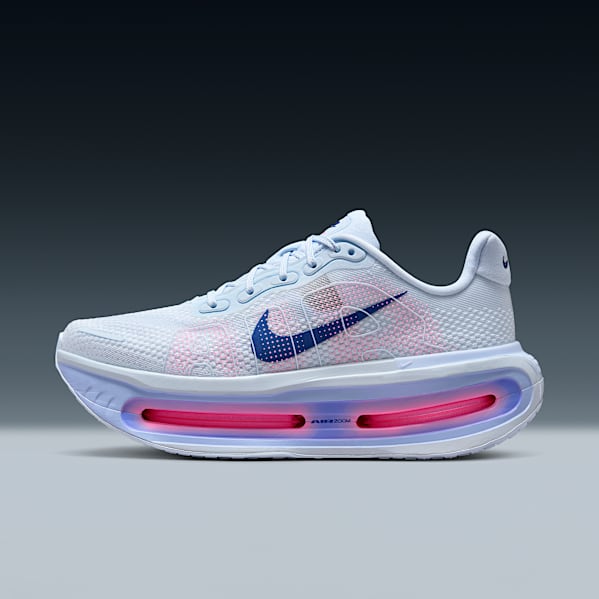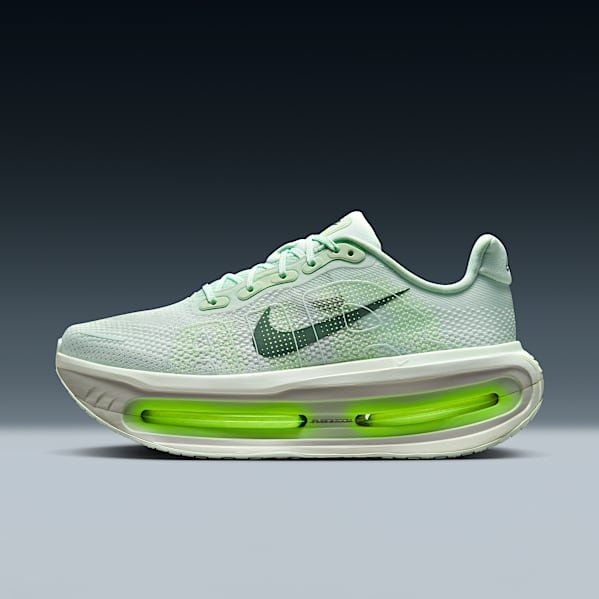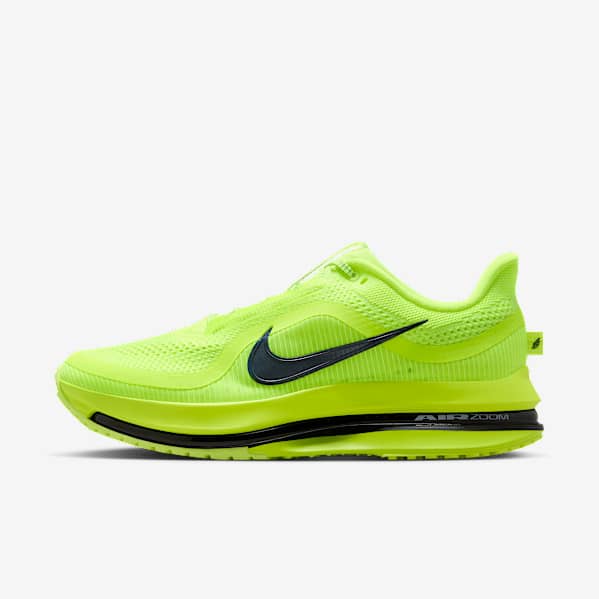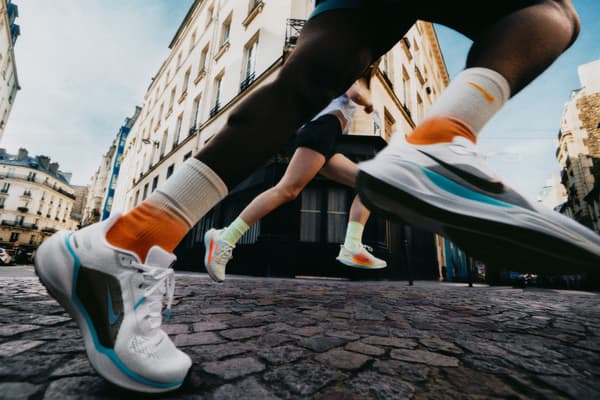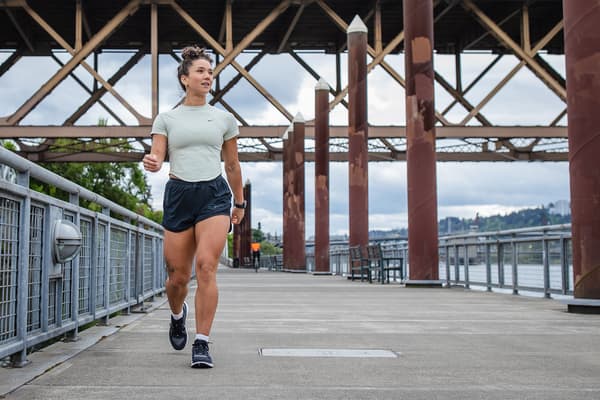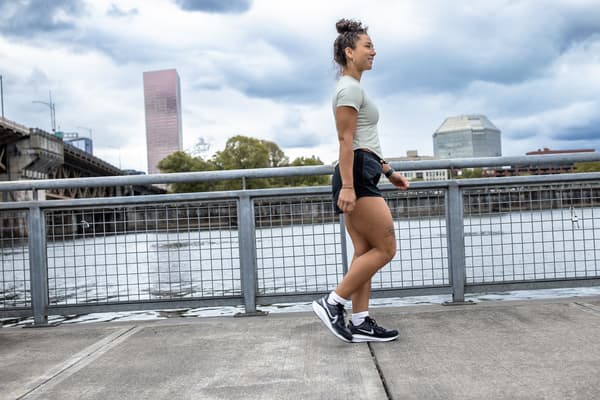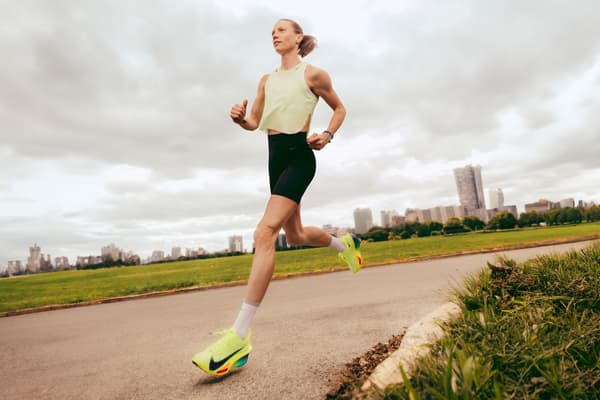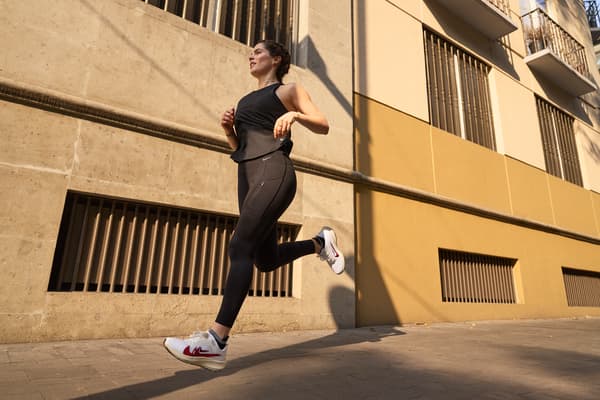How to Pick Running Shoes If You Have Bad Knees
Buying Guide
Runners can experience many different types of knee pain. Wearing the right pair of running shoes is one way to increase comfort and support mile after mile.
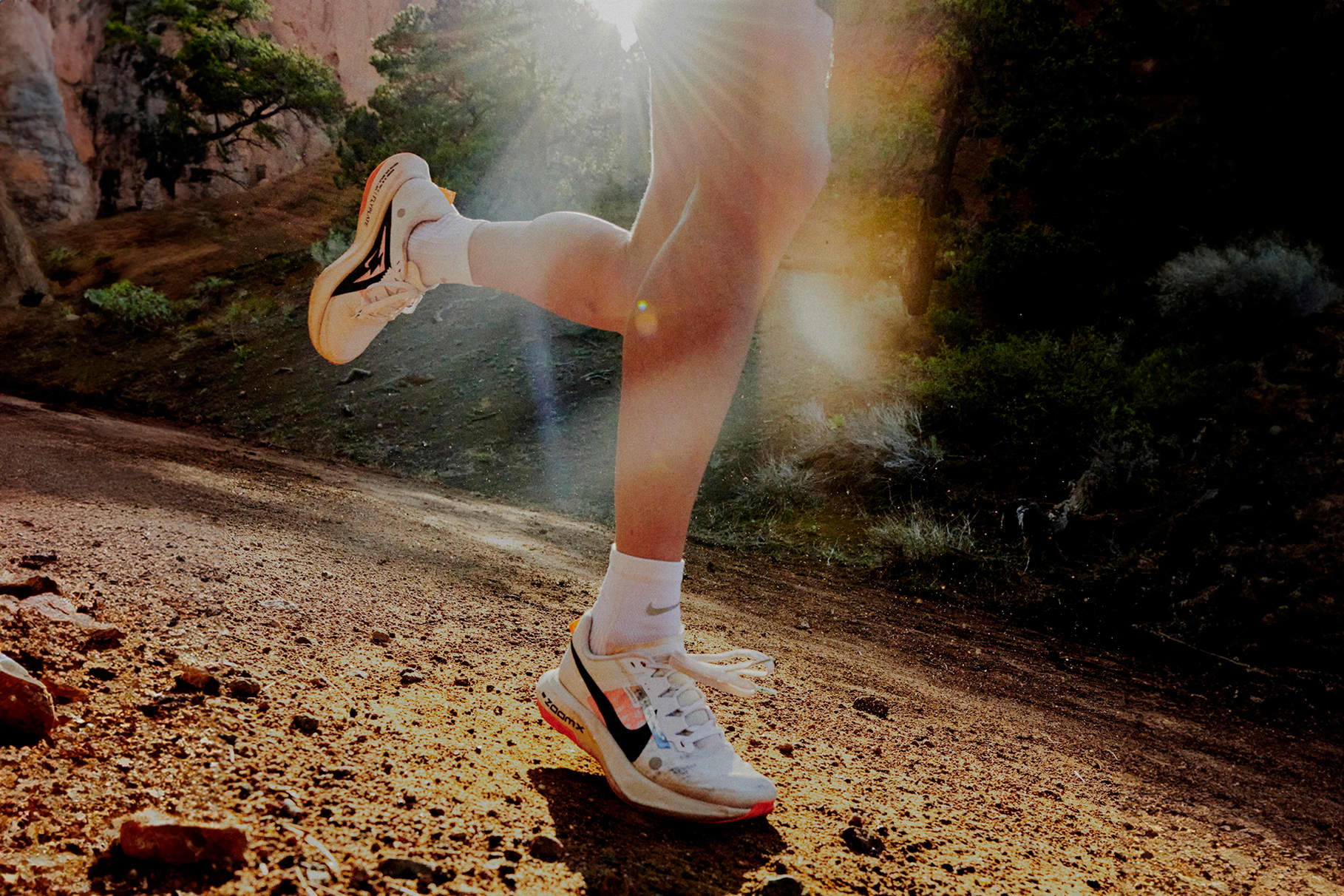
Running has numerous mental and physical benefits—in fact, running just 50 minutes per week is enough to boost your health and decrease your risk of dying, according to a systematic review published in The British Journal of Sports Medicine. However, running can be hard on your knees. When you run, you're putting pressure equal to three to four times your body weight on every step. It's a repetitive, high-impact exercise capable of causing knee pain. Think you might just be cursed with bad knees?
Many runners can overcome knee pain with strength training, proper form and the right running shoes with adequate cushioning. The first step is to identify what's causing your knee pain and take action to prevent it from recurring.
How to Choose Running Shoes for Bad Knees
1.Midsole Cushioning or Stabilising Features
If you tend to supinate—in other words, if your foot tends to lean outwards as it hits the ground—you may need extra cushioning in your shoes for shock absorption. However, too much cushioning in your running shoes can actually increase the amount of impact on your knees. You may need to try a few different cushioning levels until you find a cushioned shoe that is just right for you.
If your knee pain is caused by overpronation—meaning, your foot leans inwards as it strikes the ground—you'll likely want a pair of stability shoes with structural support such as medial posts. Stability shoes with a wide footprint that are designed for shock absorption may also help ease the pressure on your knees.
Make sure you check your shoes for proper fit, and don't rely on a breaking-in period. You should also take each new pair for a test run to make sure the comfort endures.2.Heel-Toe Drop
The difference in height between a running shoe's heel and the forefoot is known as heel-toe drop, and it changes which muscles are sustaining the impact from your step. A lower heel drop is better for most types of knee pain, including IT band syndrome and runner's knee. However, if your knees hurt because of how your stride is compensating for plantar fasciitis pain, a higher heel-toe drop may be beneficial for you.
3.Supportive Upper
Look for an upper that is breathable and moisture-wicking to keep you cool and dry, and make sure the upper has a glove-like fit and targeted support. For example, Nike Flyknit technology is both durable and lightweight, fits like a sock and provides support and cushioning in key areas.
4.Lightweight Construction
Heavy shoes and boots can put undue stress on your knees, so it's important to choose a pair that doesn't weigh you down from heel to toe. Aim to strike a balance between support and cushioning, and look for a lightweight feel.
What Causes Knee Pain When Running?
While a number of factors can cause knee pain, here are some common examples that runners may experience. Bear in mind, while there are many tips and exercises that can support healthy and pain-free knees, be sure to speak with your healthcare provider for expert medical advice if your knee pain persists.
1.Runner's Knee
If your leg muscles are weak or tight, your kneecaps may be poorly aligned. The repetitive stress of impact on misaligned knees can cause several different conditions that present with pain under the kneecap. You may feel pain when walking, running, squatting or going up and down the stairs.
What You Should Know: Make sure you stretch before your workout and build up slowly to your desired running distance while you work on strengthening your legs. You should also incorporate different types of exercise into your routine to develop balanced muscles and avoid bad knees.2.IT Band Syndrome
Weak hip muscles can put extra strain on the iliotibial (IT) band when running. That causes friction between your IT band and thigh or knee, which can irritate the bone and cause pain and swelling. If you have ITBS, the outside of your knee will hurt, and you might hear popping or clicking with movement.
What You Should Know: Make sure you warm up before your run, stretch regularly and incorporate exercises that strengthen your hips into your workout routine. You should rest during flare-ups, but continue stretching and foam rolling.3.Patellar Tendonitis
The tendon that connects your knee and shin can become inflamed from repetitive impact. You'll typically notice pain underneath your kneecap that comes on when you start running or when you stand from sitting.
What You Should Know: First, check your running shoes to see if it's time for a replacement. The arch support in your running shoes will decrease over time, so it's best to get a new pair at least every 300 miles. If you're not sure how long you've worn yours, try a new pair and see if they feel better. If the soles of your shoes feel worn out, that's a sign that you've already been wearing them too long.4.Knee Bursitis
Fluid-filled sacs known as bursa help provide cushioning between your bones and tendons, but they can also become painfully inflamed. It can be caused by trauma to the knee or by strenuous activity like running. You might feel a swollen, squishy lump on the front of the knee or pain and stiffness in the knee itself.
What You Should Know: When you run, make sure you take plenty of stretching breaks, and build up to your desired distance slowly. Knee bursitis is also more common in people with obesity, so work on maintaining a healthy weight. You may want to vary the types of cardiovascular exercise you do if the issue recurs.5.Arthritis
Running or even walking for many years can cause the articular cartilage to wear down, and that leads to joint pain. Most people feel the pain of arthritis on the inside of the knee. When you have arthritis, it's important to stay active. Anti-inflammatories may help with the pain.
What You Should Know: While there's no way to ensure you won't get arthritis as you age, keeping a healthy weight and limiting stress on your joints can help.6.Bad Form
If some muscles are stronger or tighter than others, these imbalances can lead to knee pain when you run. It's usually felt inside the knee or kneecap, but it depends on your individual running form. If you're having knee pain and can't identify the cause, you'll want to see a physiotherapist who works with runners for an evaluation.
What You Should Know: If you're a beginner, you may want to consult a running coach or PT prior to training.7.Overpronation or Supination
Having flat feet is associated with knee pain, especially in older adults. That's because people with flat feet tend to overpronate or roll their feet inwards. While some pronation is natural and healthy, if your low arches are causing knee pain, you may need to correct your gait with the right cushioned shoe. Similarly, people with high arches tend to supinate or roll their feet outwards. While high arches are more likely to put stress on your ankles, some people can get knee pain without enough arch support.
What You Should Know: Get the right running shoes. If you tend to supinate to the point of pain, look for shoes with lots of arch support, extra cushioning and a larger toe box. If you overpronate to the point of pain, you may need a pair of stability or motion-control shoes.
Frequently Asked Questions
Should I Have Two Pairs of Running Shoes?
Yes. If you rotate your running shoes, you'll change which parts of your leg are absorbing the most impact. That's especially important if you tend to have knee pain after you run. A 2015 study found that rotating your running shoes can decrease your risk of running-related injury by up to 39 percent.
How Can I Run without Hurting My Knees?
To help avoid injury, runners should build up speed and distance slowly. Make sure that you also incorporate cross-training and resistance training into your workout routine, since building strong muscles in your legs and core and learning different movement patterns can set you up for success. It's also important to stay hydrated, warm up before you lace up your running shoes and stretch regularly.
Can Running Shoes Affect Your Knees?
Yes. Wearing worn out running shoes with little cushioning can cause knee problems, as can wearing the wrong type of shoes for your foot. If you're having knee pain, consider replacing your shoes or consulting a physiotherapist to work towards pain-free running.
